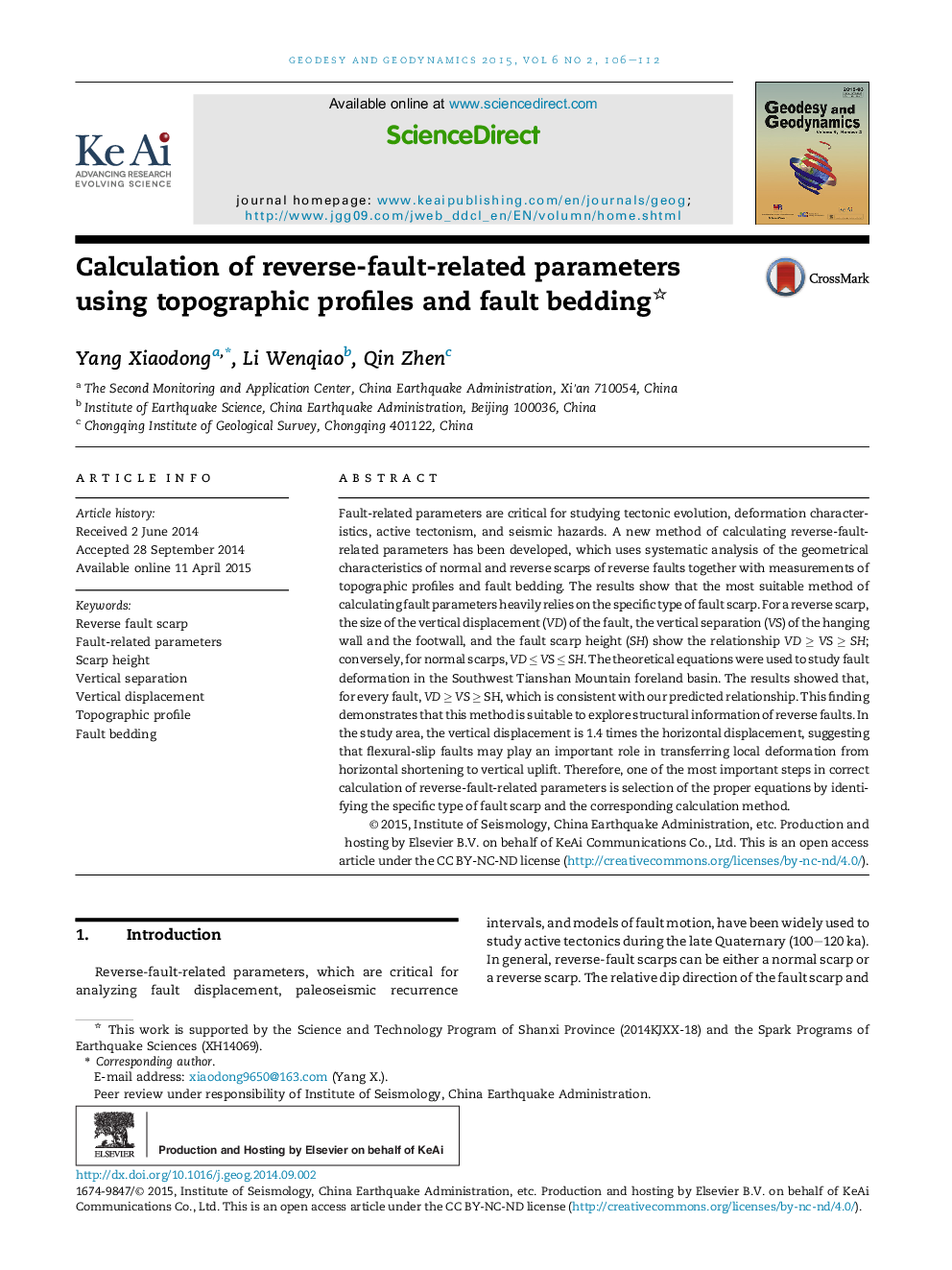| Article ID | Journal | Published Year | Pages | File Type |
|---|---|---|---|---|
| 4683503 | Geodesy and Geodynamics | 2015 | 7 Pages |
Fault-related parameters are critical for studying tectonic evolution, deformation characteristics, active tectonism, and seismic hazards. A new method of calculating reverse-fault-related parameters has been developed, which uses systematic analysis of the geometrical characteristics of normal and reverse scarps of reverse faults together with measurements of topographic profiles and fault bedding. The results show that the most suitable method of calculating fault parameters heavily relies on the specific type of fault scarp. For a reverse scarp, the size of the vertical displacement (VD) of the fault, the vertical separation (VS) of the hanging wall and the footwall, and the fault scarp height (SH) show the relationship VD ≥ VS ≥ SH; conversely, for normal scarps, VD ≤ VS ≤ SH. The theoretical equations were used to study fault deformation in the Southwest Tianshan Mountain foreland basin. The results showed that, for every fault, VD ≥ VS ≥ SH, which is consistent with our predicted relationship. This finding demonstrates that this method is suitable to explore structural information of reverse faults. In the study area, the vertical displacement is 1.4 times the horizontal displacement, suggesting that flexural-slip faults may play an important role in transferring local deformation from horizontal shortening to vertical uplift. Therefore, one of the most important steps in correct calculation of reverse-fault-related parameters is selection of the proper equations by identifying the specific type of fault scarp and the corresponding calculation method.
